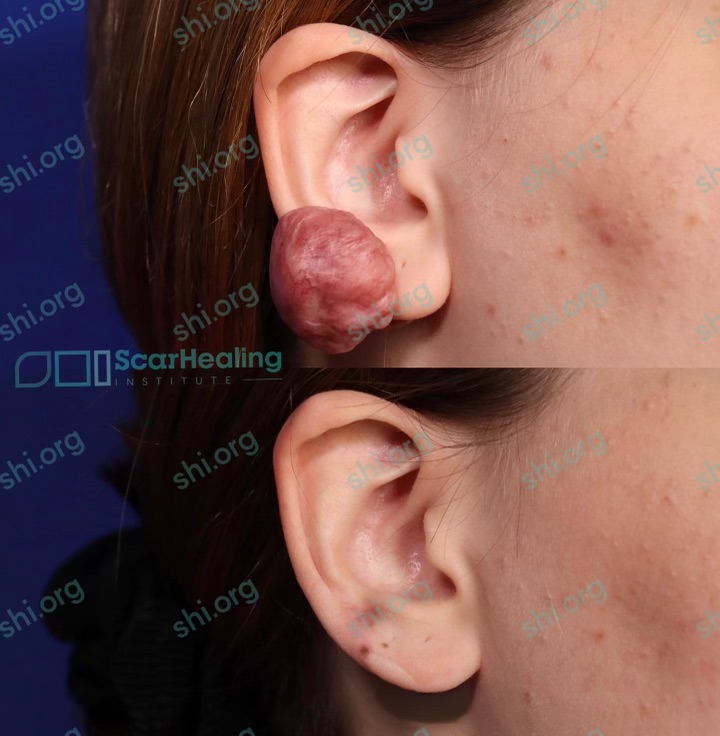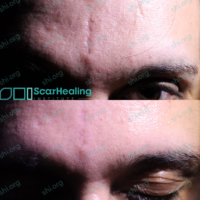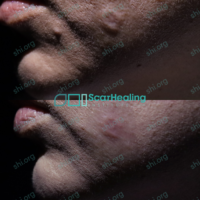If you’re dealing with visible scars that affect your self-esteem, scar revision in Los Angeles offers specialized treatments tailored to your needs. No matter the cause, scars can leave lasting emotional and physical effects.
At the Scar Healing Institute in Beverly Hills, we understand the unique challenges of scar healing and offer cutting-edge solutions to help you achieve smoother, clearer skin. Our expert dermatologists work closely with you to design personalized treatment plans that deliver real, lasting results.
Take the first step toward reclaiming your confidence—schedule your consultation today and begin your scar revision journey with the Scar Healing Institute.
Types of Scars Our Dermatologists Treat
Acne Scars
Acne scars are among the most common concerns for scar revision in Los Angeles and Beverly Hills. These scars appear in three primary forms:
- Icepick scars – Deep, narrow indentations that create a pitted look.
- Boxcar scars – Broad, crater-like depressions with sharp edges.
- Rolling scars – Uneven, wave-like indentations causing skin texture irregularities.
Our targeted scar revision treatments help reduce the visibility of acne scars, improving overall skin tone and texture.
Atrophic (Depressed) Scars
Atrophic scars refer to depressed, pitted scar-like marks on a person’s skin that result from the loss of collagen during the skin’s inflammatory healing process. The localized degradation of collagen and subcutaneous fat causes the affected area to dip below the level of healthy skin tissue. The type of atrophic scar that tends to form varies for each person, and the depressions may be shallow and wide or narrow and deep.
Scar revision treatments like laser resurfacing, microneedling, and collagen stimulators can rebuild skin volume for a smoother, more even complexion.
Hypertrophic (Raised) Scars
A hypertrophic scar is a thick, raised scar developed on areas of high skin tension. It is an abnormal wound healing response that commonly occurs from excess collagen production following diseases, burns, surgical incisions, and other forms of skin trauma. Although not life-threatening, they can be a bit itchy and painful if left untreated. Unlike atrophic scars, hypertrophic scars result from overproduction of collagen as opposed to the depletion of collagen.
Through customized scar revision in Los Angeles and Beverly Hills, our dermatologists use laser therapy, injections, and surgical revision to flatten and soften raised scars.
Keloid Scars
Keloid scars are a type of raised scar that extends beyond the boundaries of the original wound and are characterized by their shiny luster, rubbery texture, and raised nature. While they may form anywhere on the skin, they are frequently found on the neck, chest, and shoulders. Keloids are usually of pink, red, skin color and darker than the surrounding skin. Keloids are generally not harmful to health but may be itchy and create discomfort when performing certain movements.
Specialized scar revision treatments like laser therapy, steroid injections, and advanced resurfacing techniques can help reduce keloid size and discomfort.
Surgical Scars
Post-surgical scarring is a natural and unavoidable consequence of wound healing following injury to the skin. Unnatural elevation, pigmentary changes, and irregular textural appearances of scars often present aesthetic concerns to patients. While scars usually fade on their own, more severe cases may require professional scar revision to ensure optimal correction.
We offer surgical scar revision in Los Angeles and Beverly Hills, using precise techniques to minimize scar prominence and restore natural skin appearance.
Traumatic Scars
Traumatic scars are the raised marks on your body developed as a part of the natural healing process of lost or damaged skin after a major injury. Based on the location and size of the wound, traumatic scars may form in different ways. In severe cases, traumatic scars can thicken and tighten the skin, impeding range of motion and causing deformity.
Scar revision treatments like subcision, laser therapy, and skin grafting can restore flexibility and smoothness for improved comfort and aesthetics.
Our Scar Revision Treatments
At Scar Healing Institute in Beverly Hills, our dermatologists offer cutting-edge scar revision treatments to improve skin texture, reduce scar visibility, and restore confidence. Whether your scars are from acne, surgery, trauma, or skin conditions, our expert team provides personalized solutions to achieve the best results.
Scar Revision Recovery & Aftercare
Proper aftercare is essential for optimal scar healing and achieving the best results from your scar revision in Los Angeles. Recovery time and care requirements vary based on the procedure, but following expert aftercare guidelines can help minimize scarring and improve skin texture.
After laser and chemical treatments, sun protection is especially important to prevent pigmentary changes. Depending on your skin type, a lightening agent may also be prescribed. For more intensive procedures involving subcision and poly-L-lactic acid (Sculptra), you may be required to massage and suction your face multiple times per day to stimulate blood flow and collagen production.
Regardless of the treatment, you should keep the area clean with mild soap and water, avoid scratching or picking at the scar, and limit physical activity that could cause friction. It’s crucial to monitor for signs of infection and maintain overall health with hydration, a good diet, and avoiding smoking. Always follow your healthcare provider’s specific aftercare instructions for the best results.





